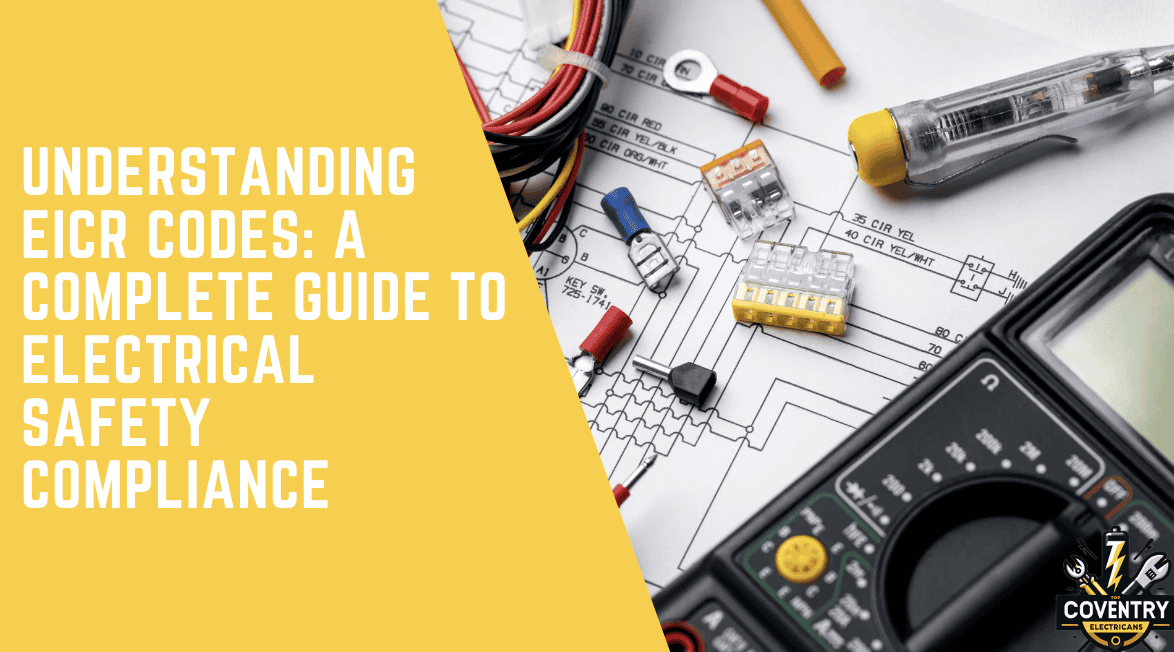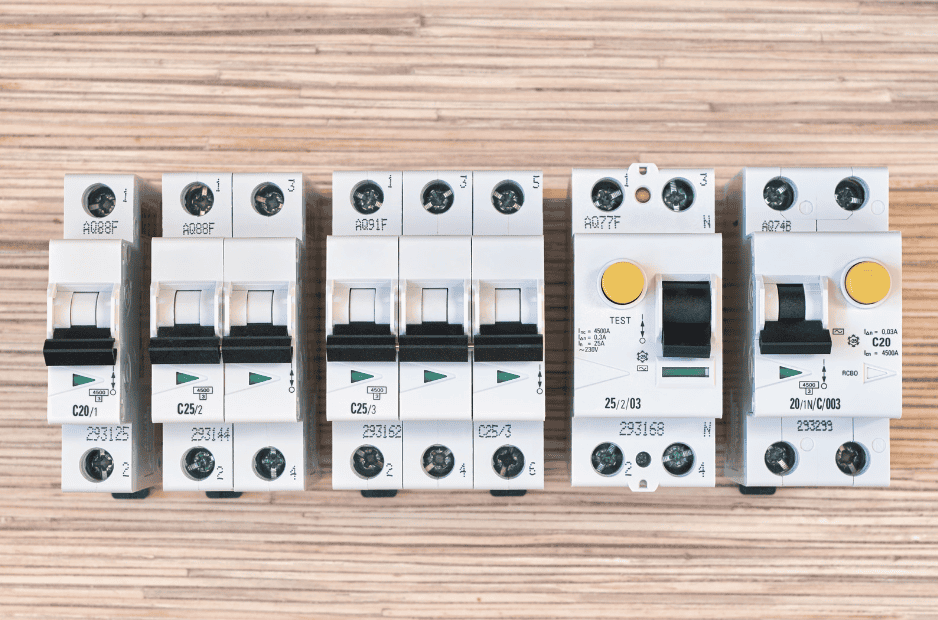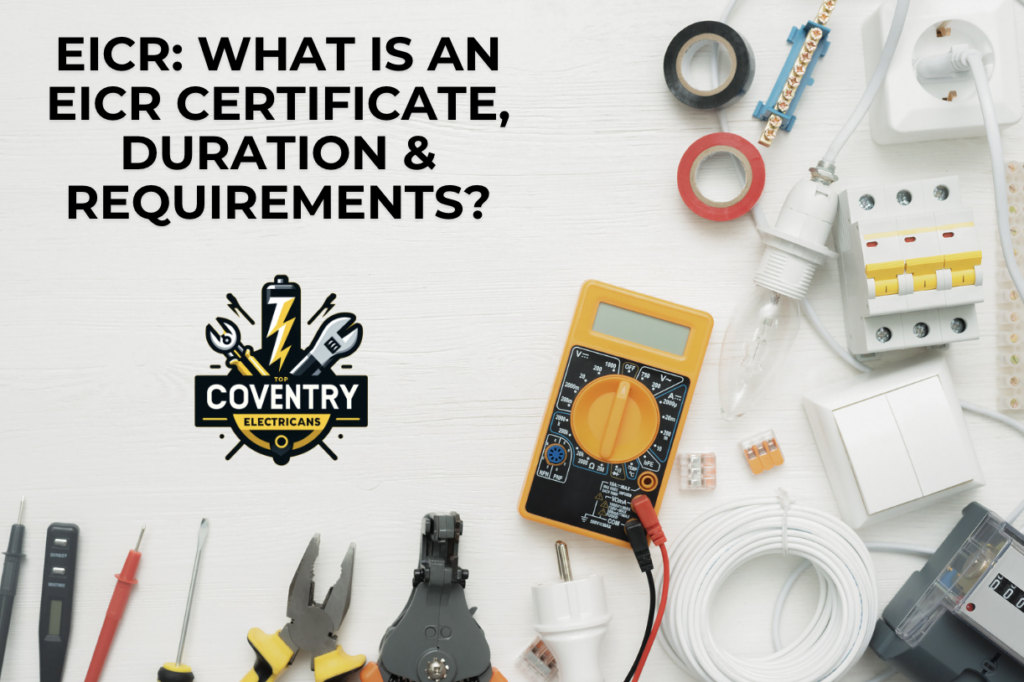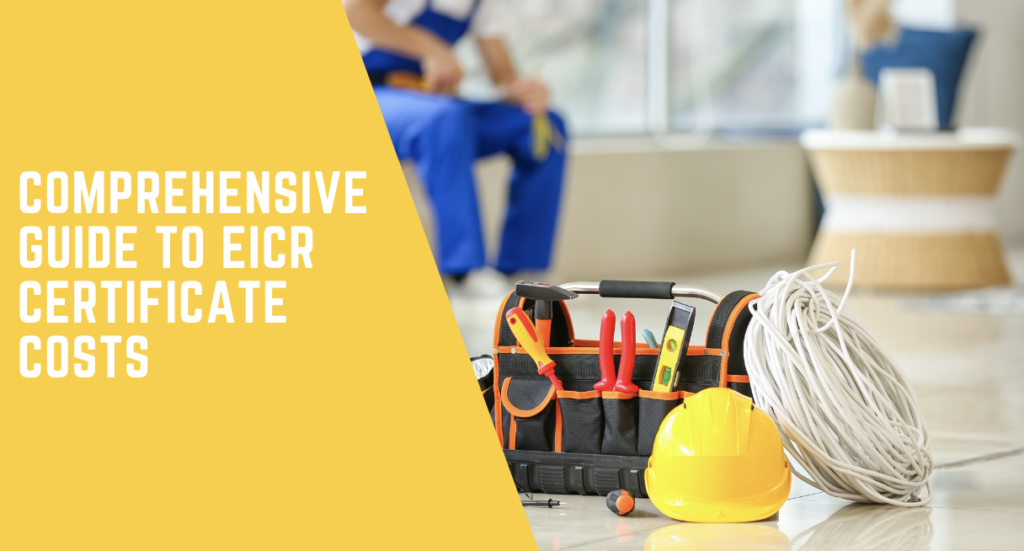

EICR Codes: A Complete Guide To Electrical Safety Compliance
- ,
- , EICR
Understanding the intricacies of Electrical Installation Condition Reports (EICR) is crucial for ensuring property safety and compliance with electrical standards. This comprehensive guide delves into the purpose and importance of EICRs, particularly for rental properties. It explores the meaning of various EICR codes—from C1 indicating immediate danger to C3 suggesting potential improvements—and their impact on property evaluations. Essential for property owners and tenants alike, this guide emphasizes the legal obligations of landlords and the peace of mind an EICR provides for tenants, ensuring all electrical installations are safe and up to date.
Key Takeaways:
Essential Safety Assessment: An Electrical Installation Condition Report (EICR) critically evaluates a property’s electrical systems to ensure their safety and compliance with current standards. Rental properties must undergo regular EICRs to manage wear and tear and prevent potential hazards.
Code Classifications and Their Urgency: The EICR identifies specific issues using standardised codes, each indicating the urgency of the problem:
- C1: Represents immediate and severe risk, necessitating urgent remedial action.
- C2: Indicates potential danger that needs addressing soon to avoid escalation.
- C3: Suggest improvements for efficiency and safety enhancement but not immediately dangerous.
- FI: Signals that further investigation is required to assess parts of the electrical system thoroughly.
Implications of EICR Ratings: An EICR that includes any C1 codes or a combination of multiple C2 or FI codes is rated unsatisfactory, which can have significant legal and safety implications, especially for landlords. Compliance with EICR standards is legally mandatory in many jurisdictions, and failure to meet these can lead to fines, inability to rent out property, or worse, endanger lives.
What is an Electrical Installation Condition Report (EICR)?
Let’s cut to the chase: an EICR, a periodic inspection report, is a comprehensive assessment of a property’s electrical installations. It’s a thorough check-up to ensure the safety of the entire electrical system, from the mains intake to the last socket.
Electrical installations are only built to last for a while. Over time, wear and tear can cause deterioration, potentially leading to hazardous situations. Getting an EICR done regularly is crucial, especially in rental properties where multiple tenants come and go.
Need to find out more: What Is An EICR Certificate, Duration & Requirements?
Importance of EICR for Property Owners and Tenants
For property owners, having an up-to-date EICR is more than just ticking a box – it’s about demonstrating a commitment to safety and compliance. Landlords, in particular, have a legal obligation to ensure their rental properties meet electrical safety standards. Failure to do so can result in hefty fines or, worse, putting lives at risk.
For tenants, an EICR provides peace of mind, knowing that the electrical installations in their home have been thoroughly inspected and deemed safe by a qualified electrician. After all, nobody wants to deal with the potential dangers of faulty wiring or outdated systems.

Detailed Explanation & Significance of EICR Codes
Now, let’s dive into the nitty-gritty of the EICR codes. These codes aren’t just random letters and numbers. They’re a standardised way of communicating the condition of the electrical installations and the urgency of any issues found.
Observation Code C1: Immediate Danger
A C1 code is an actual red flag. It signifies a severe and immediate risk to the safety of those living or working on the property. Think exposed live conductors, failed electrical equipotential bonding, or a complete lack of earthing – the stuff that could cause electric shocks, fires, or worse.
When a C1 is placed on an EICR report, it indicates that urgent remedial action is needed immediately, without any ifs, ands, or buts.
Observation Code C2: Potential Danger
A C2 code might not be as dire as a C1, but it’s still serious. It represents a situation where there’s a potential danger, a risk that could escalate if left unchecked.
Examples include outdated or damaged electrical accessories, inadequate insulation, or poor earthing arrangements. While not an immediate threat, these issues must be addressed reasonably to prevent hazards from developing.
Observation Code C3: Recommendation for Improvement
A C3 code isn’t quite as severe as its C1 and C2 counterparts, but it shouldn’t be ignored. It’s a recommendation for improvement, highlighting areas where the electrical installation could be brought up to a higher standard or made more energy-efficient.
This could range from upgrading outdated components to improving cable management or enhancing earthing arrangements. While not an urgent safety concern, addressing C3 recommendations can help extend the installation’s lifespan and ensure it operates at peak efficiency.
Observation Code FI: Further Investigation Required
Sometimes, an EICR will uncover situations where further investigation is needed before a definitive assessment can be made. That’s where the FI code comes in.
Certain installation areas were inaccessible during the initial inspection, or some ambiguities require additional testing or analysis. In such cases, the FI code serves as a flag, indicating that more work must be done to thoroughly evaluate the electrical system’s condition.
Here is a helpful table to summarise EICR Codes:
Code | Description | Examples and Actions Required |
|---|---|---|
| C1 | Immediate Danger | Exposed live conductors, failed bonding, no earthing. Urgent remedial action required immediately. |
| C2 | Potential Danger | Outdated electrical accessories, poor insulation, inadequate earthing. Needs addressing soon to prevent hazards. |
| C3 | Recommendation for Improvement | Upgrading outdated components, improving cable management, enhancing earthing. Address to improve safety and efficiency, not urgent. |
| FI | Further Investigation Required | Situations needing more detailed analysis. Further investigation needed to assess and address properly. |
Criteria for an Unsatisfactory EICR
When is an EICR Considered Unsatisfactory?
Here’s the kicker: an EICR report can be deemed “unsatisfactory” if it contains specific codes or combinations of codes. And trust me, you don’t want an unsatisfactory rating because that can spell trouble.
So, what constitutes an unsatisfactory EICR? If the report includes any C1 codes or more than one C2 code, that’s an automatic fail. Similarly, if there’s a mix of two or more C2 and FI codes, that’s also grounds for an unsatisfactory rating.
Implications of Unsatisfactory EICR Ratings
An unsatisfactory EICR rating isn’t just a slap on the wrist – it can have profound implications, especially for landlords and property owners. The electrical installation doesn’t meet the required safety standards, which could put both property and occupants at risk.
In the case of rental properties, an unsatisfactory EICR could mean that the landlord is in breach of their legal obligations, potentially facing fines or even prosecution. It also makes securing new tenants or renewing existing leases easier once the issues have been addressed and a satisfactory rating is achieved.
So, dealing with an unsatisfactory EICR is a priority, not something to be taken lightly or swept under the rug.
Common Questions and Misconceptions about EICR Codes
What Do the Codes Mean on an EICR?
Let’s clear up some common questions and misconceptions about these EICR codes. First off, the codes themselves are pretty straightforward:
- C1 = Immediate danger, requiring urgent action
- C2 = Potential danger, needs addressing within a reasonable timeframe
- C3 = Recommendation for improvement, not an urgent safety concern
- FI = Further investigation is required before a definitive assessment can be made
Simple enough? However, it’s essential to understand the implications of each code and how they factor into the overall assessment of the electrical installation.
Understanding the Grades of the EICR
An EICR report will also assign an overall grade to the electrical installation based on the codes and observations made during the inspection. These grades range from 1 to 4, with 1 being the best and 4 being the worst.
- Grade 1: No C1 or C2 codes, only C3s and FIs (if any)
- Grade 2: At least one C2 code, but no C1s
- Grade 3: Combination of C2s and FIs, but no C1s
- Grade 4: One or more C1 codes, or more than one C2
The presence of C1 and multiple C2 codes can drag down the overall grade, potentially leading to an unsatisfactory rating.

Is No RCD Protection a C2 or C3 Issue?
One common area of confusion is whether the lack of RCD (Residual Current Device) protection is classified as a C2 or C3 issue. RCDs are life-saving devices that help prevent electric shocks by quickly cutting off the power supply in case of a fault.
Well, here’s the deal: the absence of RCD protection in specific circuits or installations is generally considered a C2 code, indicating a potential danger that needs to be addressed. However, in some cases, it might be classified as a C3, depending on the specific circumstances and the age of the installation.
The bottom line is that if the EICR report flags the lack of RCD protection, it’s a clear sign that this issue needs to be sorted out, whether it’s a C2 or C3.
Why Accurate Coding is Critical in EICR
These codes aren’t just random letters and numbers—they’re a crucial tool for communicating the condition of the electrical installation and identifying potential hazards or areas for improvement.
If the coding is inaccurate or inconsistent, it can lead to a whole heap of problems:
- Misunderstanding the severity of issues and failing to take appropriate action
- Incorrect assessments of compliance and safety standards
- Confusion for property owners, tenants, and other stakeholders
Essentially, incorrect coding can undermine the entire purpose of the EICR and put people at risk. That’s why these reports must be carried out by qualified and experienced professionals who understand the significance of each code and how to apply them correctly.
The Consequences of Incorrect Coding
What happens if an EICR report does contain incorrect coding, you ask? Well, it isn’t pretty.
It could mean serious safety hazards are overlooked or downplayed, risking lives and property. Imagine a situation where a C1 code (immediate danger) is mistakenly classified as a C3 (Recommendation for improvement) – that’s a recipe for disaster.
Similarly, if less severe issues are over-coded, it could lead to unnecessary stress, expense, and disruption for property owners and tenants alike.
In extreme cases, incorrect coding on an EICR report could even result in legal consequences for the responsible parties, mainly if it’s found that safety standards were knowingly or negligently breached.
Learn more about EICR costs with our Comprehensive Guide To EICR Certificate Costs.
FAQs on EICR Failures and Compliance
We know you’ve got questions, and we’ve got answers! Here are some frequently asked questions about EICRs codes we find are popular:
Is a C2 a Fail on an EICR?
A single C2 code doesn’t automatically mean the EICR has failed. A Grade 2 EICR can still be considered satisfactory, even with one C2 present.
However, it’s important to remember that a C2 code represents a potential danger that needs to be addressed within a reasonable timeframe. So, while it might not be an outright failure, ignoring a C2 code could lead to more significant problems.
Does a C3 Make an EICR Unsatisfactory?
No, a C3 code alone won’t make an EICR unsatisfactory. C3s are recommendations for improvement, not urgent safety issues.
An EICR report can still achieve a Grade 1 rating, the best possible outcome, even if it contains one or more C3 codes. Of course, it’s still advisable to address these recommendations to enhance the overall safety and efficiency of the electrical installation, but they won’t directly impact the report’s satisfactory/unsatisfactory status.
Can a Tenant Move In with a C2 on the EICR?
Generally, a tenant shouldn’t move into a property with an outstanding C2 code on the EICR.
Remember, a C2 represents a potential danger that needs to be addressed. As a landlord, you have a legal obligation to ensure the electrical safety of your rental properties, and allowing a tenant to move in with a known C2 issue could be considered negligence.
That said, if the C2 issue is relatively minor and the necessary remedial work has been scheduled or is in progress, it might be possible for the tenant to move in, provided they’re made fully aware of the situation and any potential risks or inconveniences.
It’s all about prioritising safety and proactively addressing issues identified in the EICR report.
What is the validity of an EICR certificate?
An EICR certificate is typically valid until the next recommended inspection date, which is either 3 years or 5 years from the date of the previous inspection.
How Many C3's are Acceptable in an EICR?
There’s no hard and fast rule on how many C3 codes are considered “acceptable” in an EICR report.
C3s are recommendations for improvement, not urgent safety issues. An EICR could contain multiple C3 codes and still achieve a Grade 1 rating, the best possible outcome.
That being said, excessive C3s might raise some eyebrows and suggest that the electrical installation needs more significant upgrades or maintenance. As a general guideline, most experts recommend addressing C3 recommendations promptly, even if they’re not classified as urgent.


